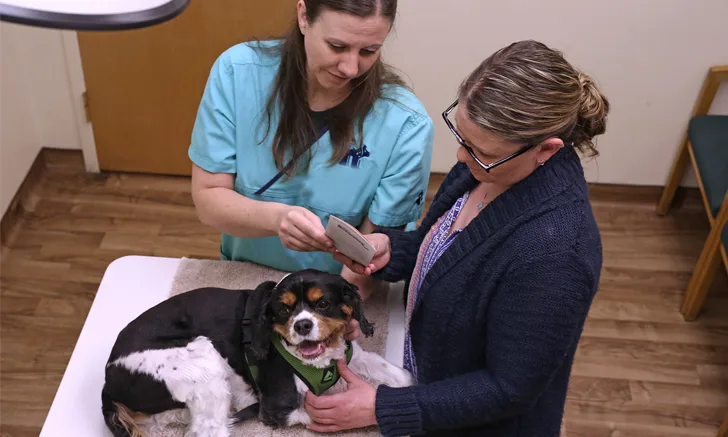Tips for Designing & Implementing Discharge Sheets
Tracy Dowdy, CVPM, MRG Consulting

Educating clients before discharging patients is often difficult because clients likely are distracted (eg, by mobile devices, children, pets) or in a hurry to leave. All veterinary practices face the challenge of instant communication and keeping their clients engaged. Educating clients can help them make good decisions about their pets’ health and provide better care at home, and also helps them recognize the value of the practice and the veterinary team.
To meet the challenge, veterinary teams must not only be familiar with the practice’s services and products but must also have excellent communication skills.
When discharging patients, client education includes the initial conversation with clients as well as the written materials they are given (eg, discharge sheets, health report cards, client education handouts). Discharge sheets can be powerful tools for educating clients before and after they leave the practice; a review of the discharge sheet at home can bolster clients’ perceptions of the value and quality of medicine their pets received.
See sample client handouts, Discharge Sheet & Pet Health Report Card.
Here are 3 tips for designing and using discharge sheets effectively.
1. Designing the Discharge Sheet
Create standardized templates to ensure the discharge sheets are clear, consistent, and professional. Practices may design multiple discharge templates specific to the reason for the patient’s visit. By attaching them to specific invoice items (eg, examinations, tests, medications, other professional services) in the practice information management system, these tailored discharge templates can be automatically populated when the veterinary nurse creates the patient medical record.
A pet health report card may be used for patients following a preventive care visit and examination. Other tailored discharge templates may be used with patients presented for common maladies (eg, ear mites) or after routine surgical procedures (eg, ovariohysterectomy).
Keeping multiple discharge sheet templates on hand will save the veterinarian and veterinary nurse time because they will not need to prepare discharge sheets for each patient.
When designing discharge sheets, consider including some of the following items.
Examination, Diagnosis, & Treatment
List detailed normal and abnormal findings; if a diagnosis is not known, describe the patient’s signs and list the tests or procedures performed and the treatment provided.
Exercise & Environmental Control
Describe any restraint and exercise restrictions needed for the patient’s recovery.
Nutrition
Provide detailed food and diet recommendations; good nutrition affects a patient’s longevity and most clients want specific instructions.
Medications
List the medications prescribed and provide detailed directions for how and when they should be given to the patient.
Additional Information
List possible outcomes and complications, and note any tests or procedures that may be necessary if the patient does not respond completely to the treatment.
Include practice information—including emergency contacts—in case the client encounters problems (eg, inability to medicate the pet).
Progress Examination
Note when the patient should be scheduled for follow-up appointments.
Signs for Concern
Note signs the client should watch for that signify possible complications and may require another practice visit.
2. Implementing a Discharge Sheet Protocol
The discharge sheet keeps clients informed about their pets’ medical status and any normal and abnormal examination findings, helps answer common questions, and makes recommendations for their pets’ continued health. Ensuring every client receives a discharge sheet every time a patient is examined, receives a diagnosis, needs surgery or another procedure, or is prescribed medication should be a standard practice protocol. Team members must be committed to the protocol and trained on their specific roles with the sheets (eg, creating, customizing, printing, explaining to clients) for successful implementation.
3. Discharging a Patient Professionally
The discharge sheet becomes the link between the veterinarian and client, and team members act as the messengers. The veterinary nurse is typically responsible for explaining the discharge to the client. However, the sheet can be used to empower the entire team to educate clients and deliver the veterinarian’s recommendations. A team member who reads the discharge sheet to the client will better appreciate and understand the care the patient received. The veterinarian may then return to answer any questions clients may have.
Conclusion
Providing clients with discharge sheets covering information they hear at the practice is a professional service for patient health and a yardstick by which clients can compare the competition. The sheets serve not only as a reminder of their pets’ needs but also of the practice that brought those needs to their attention.